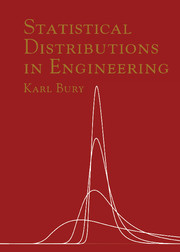Refine search
Actions for selected content:
2002 results in Engineering design, kinematics, and robotics
Contents
-
- Book:
- Stochastic Dynamics of Marine Structures
- Published online:
- 05 February 2013
- Print publication:
- 15 October 2012, pp v-xii
-
- Chapter
- Export citation
B - Poisson Process
-
- Book:
- Stochastic Dynamics of Marine Structures
- Published online:
- 05 February 2013
- Print publication:
- 15 October 2012, pp 386-387
-
- Chapter
- Export citation
References
-
- Book:
- Stochastic Dynamics of Marine Structures
- Published online:
- 05 February 2013
- Print publication:
- 15 October 2012, pp 391-404
-
- Chapter
- Export citation
9 - Response Spectrum
-
- Book:
- Stochastic Dynamics of Marine Structures
- Published online:
- 05 February 2013
- Print publication:
- 15 October 2012, pp 209-232
-
- Chapter
- Export citation
13 - Dynamic Load Effects for Design Checks
-
- Book:
- Stochastic Dynamics of Marine Structures
- Published online:
- 05 February 2013
- Print publication:
- 15 October 2012, pp 287-319
-
- Chapter
- Export citation
5 - Stochastic Processes
-
- Book:
- Stochastic Dynamics of Marine Structures
- Published online:
- 05 February 2013
- Print publication:
- 15 October 2012, pp 142-160
-
- Chapter
- Export citation
Index
-
- Book:
- Stochastic Dynamics of Marine Structures
- Published online:
- 05 February 2013
- Print publication:
- 15 October 2012, pp 405-410
-
- Chapter
- Export citation
16 - Monte Carlo Methods and Extreme Value Estimation
-
- Book:
- Stochastic Dynamics of Marine Structures
- Published online:
- 05 February 2013
- Print publication:
- 15 October 2012, pp 341-384
-
- Chapter
- Export citation
10 - Response Statistics
-
- Book:
- Stochastic Dynamics of Marine Structures
- Published online:
- 05 February 2013
- Print publication:
- 15 October 2012, pp 233-251
-
- Chapter
- Export citation

Engineering Design
- Representation and Reasoning
-
- Published online:
- 05 June 2012
- Print publication:
- 09 April 2012

Statistical Distributions in Engineering
-
- Published online:
- 05 June 2012
- Print publication:
- 13 January 1999

Chemical Engineering Design and Analysis
- An Introduction
-
- Published online:
- 05 June 2012
- Print publication:
- 28 August 1998
-
- Book
- Export citation

Design Paradigms
- Case Histories of Error and Judgment in Engineering
-
- Published online:
- 05 June 2012
- Print publication:
- 27 May 1994

Classical Mechanics
- Transformations, Flows, Integrable and Chaotic Dynamics
-
- Published online:
- 05 June 2012
- Print publication:
- 08 May 1997

Fundamentals of Noise and Vibration Analysis for Engineers
-
- Published online:
- 05 June 2012
- Print publication:
- 18 September 2003

Introduction to Structural Dynamics and Aeroelasticity
-
- Published online:
- 05 June 2012
- Print publication:
- 01 July 2002
-
- Book
- Export citation

Materials for Engineers
-
- Published online:
- 05 June 2012
- Print publication:
- 04 August 2008

Mechanical Behavior of Materials
-
- Published online:
- 05 June 2012
- Print publication:
- 09 November 2009

Dynamics of Particles and Rigid Bodies
- A Systematic Approach
-
- Published online:
- 05 June 2012
- Print publication:
- 14 November 2005
-
- Textbook
- Export citation

Statics and Dynamics with Background Mathematics
-
- Published online:
- 05 June 2012
- Print publication:
- 22 May 2003
